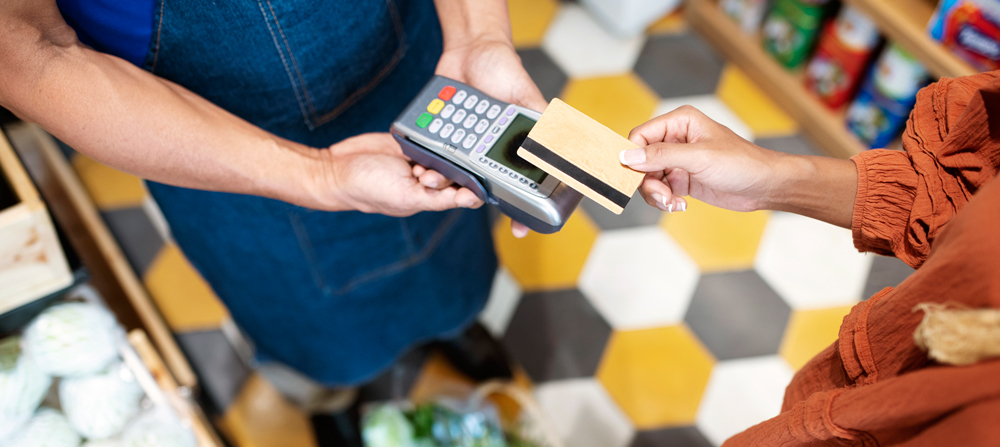
Sales in the high consumption sector in Spain have registered lower growth with an increase of 3.1% in January compared to the same month of the previous year.
In contrast, the average price has increased by 3.3%, thus marking the interannual variation rates with the lowest growth in the historical series since the rise in inflation. Meanwhile, demand has barely changed, showing a slight drop of 0.2%, according to the latest data published by NIQ.
DATA BY CATEGORIES
Regarding spending in different categories, the increase is no longer concentrated mainly on food for Spaniards. Spending in this category has increased by 3.2%, matching the increase experienced in drugstores/perfumery, while for beverages the increase has been 2.7% in year-on-year terms. These figures are mainly influenced by the behavior of the average price, which has registered an increase of 3.6% in food, 1.9% in beverages and 4.1% in drugstores/perfumery.
Demand shows virtually uniform stability across all major sections, with a slight decrease of 0.4% in volume sales for the food category, an increase of 0.7% for beverages and a drop of 0.9%. % for drugstore and perfumery.
Although demand has remained stable during the month of January, dynamic categories are observed that are experiencing notable growth in sales volume. Among them, dietary treatments stand out, which increased by 17.3%, followed by facial treatment with an increase of 14.7%. Significant increases were also recorded in ball cheese (11.1%), washing supplements (10.8%), grated cheese (9.7%), soft cheese (6.7%), pasteurized white cheeses (5.3%), refrigerated pâtés (4.4%), fresh cheese (4.2%), as well as ice cream and nuts, both with an increase of 4.1% . It is important to highlight the increase in water demand, which increases by 6.4% due to the unusually high temperatures recorded in the month of January and the prolonged drought.
On the other hand, among the least demanded categories, high-market parapharmacy continues to occupy first place, with a drop of 17.2%, despite the brief incursion that masks had in January. They are followed by cheeses petite type, with a decrease of 12.3%, baby foods (11%), preserved meat and pâtés (7.6%), alcoholic beverages (7%), cocoa (5. 8%), smoked products (5.1%) and bleaches and disinfectants, which have seen their sales decrease by 4.9% compared to January 2023.

PRICE DATA
In terms of prices, oil once again tops the list with a notable increase of 26.2%, followed by juices (+13.6%), baby foods (+13.4%), frozen vegetables (+12 .8%), olives and pickles (+12.7%), traditional cheese (+9.8%), frozen prepared fish (+8.2%), chocolates (+7.9%), pastries (+7.7%), sweets (+7.7%) and cocoa (+7.3%). Outside of the food section, parapharmacy registered an increase of 11.6%, while fragrances increased by 12.1%.
On the other hand, at the opposite extreme, dairy products stand out for the decreases in the average price compared to January 2023, with grated cheese (-7.4%), butter (-6.3%), cheese ball (-6%), pasteurized white cheeses (-5.9%), processed cheese (-3%), yogurts (-2.3%), cream (-2.1%) and liquid milk and vegetable drinks (-1.2%).
In addition to this broad category of dairy products, decreases are also observed in the prices of household pulp and washing accessories, both with a decrease of 6%, margarine (-5.4%), facial treatment (-5 .1%), diet products (-2.6%), laundry detergents (-2.2%), refrigerated ready meals (-1.1%) and prepared desserts (-1.1%) .
DATA BY BRANDS
Regarding the disparity between brands, the situation shows a divergent view, with an increase in value sales of private label brands (PLB) of 6.3%, in contrast to the increase of 0.7% in manufacturer's marks (MM). Furthermore, volume sales experienced an increase of 3.5% for the former, while they decreased by 4.4% for the latter.
DATA BY SALES CHANNELS
Regarding sales channels, the outstanding performance corresponds to the online segment during the month of January, with a 10% increase in sales in value compared to the same period of the previous year, notably higher than the 4.6% registered in large supermarkets, 2.8% in medium-sized ones and 1.9% in small ones. On the other hand, hypermarkets have experienced a decline of 4.6% in year-on-year terms.


